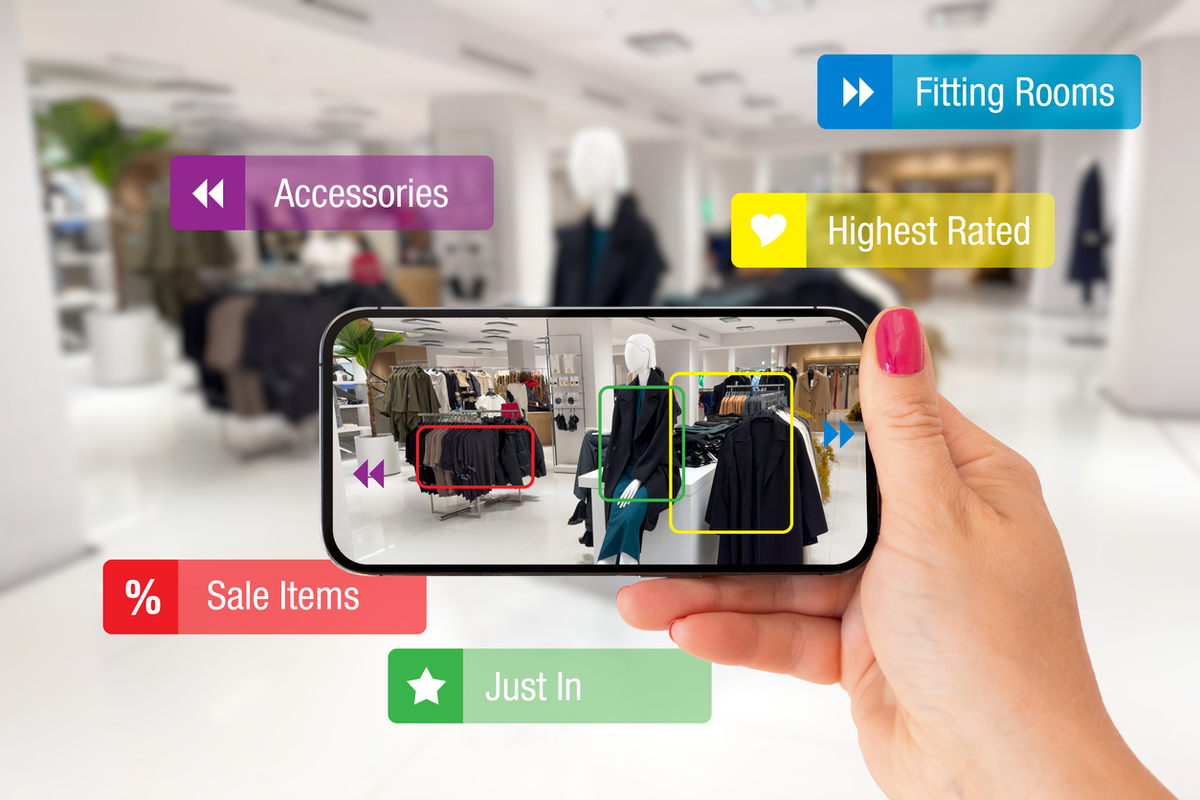AI and the future of retail

Retailers are exposed to constant change. The economic environment fluctuates relentlessly, more often providing new difficulties than offering new opportunities.
At the same time, consumer behaviour is constantly changing. What is desirable today may, sometimes unaccountably, be unacceptable tomorrow. In these circumstances, any planning – for stock, operations or communications – seems almost impossible.
However, by using artificial intelligence (AI) tools, retailers have an unprecedented opportunity to use their data as a way of managing an uncertain future and building their business more effectively – supporting efficient operations, keeping costs down and, crucially, providing an enhanced customer experience (CX).
Enhancing the customer’s experience
AI is revolutionising CX. Smart product tags and QR code scanners are established ways of totting up the cost of a shopping basket as you shop. But you still have to check out before you leave the store. Now facial recognition systems allow people to pick up what they want, glance at a store camera (known as “face swiping” in China), and leave the shop with the bill automatically being charged to their account.
Another advance is the use of augmented reality in stores and at the consumer’s home. Technology such as L’Oreal’s ModiFace allows people to try out cosmetics virtually via a video on their phone. While this technology has been available for several years, the advances in AI technology now mean that an instant analysis of skin problems, such as pores, blemishes, redness and wrinkles, can be provided and personalised skincare products recommended.
Customer service can also be enhanced. AI-powered chatbots can answer customer questions and resolve issues faster, and often more effectively, than human assistants. Advances in generative AI such as ChatGPT are starting to make the outputs from these tools indistinguishable from those that would be provided by a human, answering questions about products and even persuading customers to buy with personalised product recommendations based on the customer’s previous behaviour, their current circumstances, and external trends.
More effective marketing
Personalised product recommendations and marketing messages are made more effective by applying AI to anticipate customer requirements and questions. And an emerging method – the use of emotion – is making this technique even more powerful. Computer vision can analyse emotion based on facial expression, body language and tone of voice and recommend products based on this. Feeling happy? Perhaps a yellow jumper will appeal. Feeling down? Then perhaps a brown jumper will better suit your mood.
But AI has another role in marketing – making it easier for people to find the goods they want to buy. Trawling through online catalogues can be tedious if you are looking for a particular item. Traditional retail search engines are focused on using keywords to produce lists of potential products of interest. But AI is transforming product search. People can simply talk to their computer, describing what it is they want, or they can photograph a similar item and show it to the AI tool. It’s very easy (over 70 per cent of consumers prefer voice searches to keyboard queries) and much more likely to result in a customer seeing the product they want to buy.
Yet another emerging technique is the use of deep fakes. AI-generated fake videos of celebrities can used to endorse products – without the celebrity ever having to spend time visiting a studio. Even inanimate objects such as paintings can be conscripted: perhaps the Mona Lisa could recommend your latest line of lipsticks.
Improved operational efficiency
Just as important as marketing is AI’s ability to drive down costs by supporting operational efficiency. This can involve inventory management, using machine learning and smart shelves to notify employees (or other AI systems) when stocks are running low, and using predictive analytics to make seasonal demand predictions.
The process of getting the required new inventory ordered can also be optimised, with AI enhancing efficiency across the entire supply chain. That stock needs to be delivered and logistics can also be improved, with AI systems used to increase driver safety, for example by detecting tiredness, and support driver awareness, for example providing real-time alerts about changing driving conditions. Once the new stock has been delivered to the warehouse, AI can improve pick-and-pack processes, giving employees more time to focus on other tasks that add value to the operation, such as identifying repeated packaging problems.
Strengthening the bottom line
Finance is at the heart of any retail business, and while improving CX, sales and supply chain efficiency are all important, in the end it is profitability that counts. And again, AI has a strong part to play here.
AI can be used to update prices in real time based on factors such as demand and supply, with the intent of maximising revenues and profits. This can help retailers ensure they are always offering the best possible prices to their customers.
AI can also be used to detect fraudulent transactions. This can help retailers protect themselves from financial losses. Take the use of a stolen credit cards: retailers who are too cautious may find themselves rejecting perfectly safe purchases while others may accept risky purchases only to be denied payment. PayPal uses AI to optimise the detection of credit card fraud, enabling retailers to maximise their revenue.
Another type of fraudulent return is known as wardrobing, where consumers buy clothing with the intention of wearing it only once and then returning it. AI can be used to detect customers who are likely to be guilty of this type of fraud while protecting those customers who have previously returned items for good reasons.
Benefitting from machine learning
With AI getting increasingly powerful, retailers who embrace it will benefit in a number of ways. AI can increase customer satisfaction by providing a more personalised, engaging and friction-free shopping experience for customers. It can help retailers create new revenue streams through personalised advertising and data-driven insights. And at the same time, it can improve efficiency by automating tasks, optimising inventory and improving fraud detection.
Of course, it’s important to avoid being overenthusiastic. The short-term impact of AI on retailing may not be as pronounced as some commentators suggest. Using AI isn’t free and setting up new AI-powered systems will not always be cost-effective. And a focus purely on cost reduction – such as reducing headcount – is unlikely to be effective: the real benefits will probably come from augmenting, rather than replacing, sales human skills. Nonetheless it’s clear that AI is playing an increasingly important part in retail, and businesses that embrace it in a structured and pragmatic way will surely reap the rewards.

Jeremy Swinfen-Green
Most Viewed
Winston House, 3rd Floor, Units 306-309, 2-4 Dollis Park, London, N3 1HF
23-29 Hendon Lane, London, N3 1RT
020 8349 4363
© 2025, Lyonsdown Limited. Business Reporter® is a registered trademark of Lyonsdown Ltd. VAT registration number: 830519543





